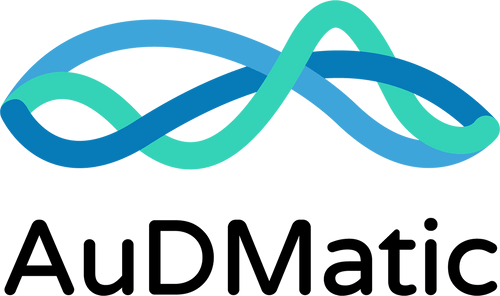Patient inactivity—when previously engaged patients lapse from regular appointments, follow-ups, or device upgrades—creates measurable revenue loss and undermines long-term hearing health outcomes. Each missed visit or delayed upgrade represents not just a lost billing opportunity, but also a widening clinical gap. This article explores why inactive patients cost audiology clinics money and health outcomes, how AI-powered automation like AuDMatic re-engages them efficiently, and what steps clinics can take to measure and maximize reactivation ROI.
Understanding the Financial Impact of Patient Inactivity
Patient inactivity drives revenue leakage through missed appointments, fewer upgrades, lower accessory sales, and declining referrals. When patients stop returning, clinics lose recurring income and lifetime value (LTV) while acquisition costs remain constant. The correlation is direct—revenue depends on visit cadence and engagement frequency. Without proactive recall, LTV drops sharply, and profitability erodes.
Typical cost vectors show the pattern clearly:
Missed Appointments: Inactive patients create underutilized clinician hours, costing an estimated 1–3 missed bookings per 100 inactive patients monthly (businessplan-templates.com).
Lost Upgrades: Delayed or skipped device updates cut upgrade conversions by 5–15% (startupfinancialprojection.com).
Reduced Referrals: Engagement decline lowers referral flow 10–25% annually (financialmodel.net).
Reactivating even a small percentage of these patients significantly lifts clinic margins, utilization, and scheduling efficiency.
Why Inactivity Translates to Lost Revenue
The financial drain from inactivity compounds across multiple revenue channels. Each no-show reduces billable hours; every missed follow-up removes opportunities for accessory sales or service renewals. For a 1,000-patient practice, losing engagement from just 10% of patients could cost several thousand dollars monthly. Understanding this financial equation clarifies why clinics must treat reactivation as both a clinical and business priority.
The Hidden Healthcare Cost of Untreated Hearing Loss
Untreated hearing loss drives up broader healthcare costs and patient morbidity. Studies link untreated impairment to higher rates of cognitive decline, social isolation, and depression—each escalating long-term medical expenses. For clinics, lapsed follow-ups mean delayed interventions that require more clinician time later. Framing re-engagement as preventive care, rather than an optional check-up, resonates better with patients and improves response rates to outreach campaigns.
Why Audiology Patients Become Inactive
Patients lapse for predictable behavioral and operational reasons: they feel fine after the initial fitting, forget scheduled recalls, or hesitate due to cost. Clinics also struggle with inconsistent CRM data, weak reminder systems, and limited staff time for personalized outreach. Identifying these root causes allows automation to intervene effectively. For instance, forgetfulness can be countered with multi-channel reminders; perceived lack of need can be solved through educational sequences highlighting the importance of ongoing care.
How Forgetfulness Impacts Profitability—and How Automation Fixes It
Forgetfulness drives no-shows and missed follow-ups, directly impacting utilization rates. Automated reminder systems—combining SMS, email, and voice—restore a large share of these missed bookings. A simple 7-, 30-, and 90-day recall cadence can recover dormant revenue without adding staff workload. When powered by AI-driven workflows, reminders become self-operating revenue recovery mechanisms, sustaining schedule stability while freeing administrative time.
How AuDMatic Re-engages Inactive Patients
AuDMatic uses AI-powered automation to identify at-risk patients, segment them intelligently, and personalize multi-channel outreach. The system orchestrates the full patient journey—from reminder to rebooking to upgrade—ensuring no patient is lost in the cracks.
Key benefits include:
AI Personalization: Tailors communication by behavior, device type, and urgency, increasing conversion rates (lifestyle.thriveinsider.com).
24/7 Automation: Runs continuous outreach across SMS, email, and phone, ensuring consistent patient contact (lifestyle.thriveinsider.com).
Reporting & Analytics: Tracks reactivation ROI, revenue, and LTV (lifestyle.thriveinsider.com).
By integrating predictive intelligence with automated cadence design, AuDMatic reduces staff effort while amplifying patient engagement and revenue outcomes.
AI’s Role in Personalized Patient Communication
AI replaces one-size-fits-all messaging with precision targeting. By analyzing patient behavior, device data, and communication history, it predicts which patients are most likely to respond—and through which channel. Predictive reactivation scoring ranks inactive patients by conversion likelihood, allowing clinics to focus on high-yield groups. AI then selects the right message type (educational vs. urgent) and timing, boosting open and response rates while reducing manual segmentation effort.
Automating the Patient Journey
AuDMatic maps every patient’s journey into automated, trigger-based workflows. It starts with lead capture, continues through appointment scheduling, follow-up, and ultimately loyalty and upgrade prompts. Each stage triggers automated messages based on time (e.g., six months post-visit) or behavior (e.g., missed appointment). Common cadences include:
Immediate confirmation + 48-hour reminder
7/30/90-day follow-up after no-shows
30/90/180-day nurture cycles for device users
This seamless journey ensures continuity, reduces human error, and keeps patients engaged for life.
Full-Service Automation—Without Burdening Staff
AuDMatic’s full-service solution covers everything from creative ideation to execution, compliance management, and revenue reporting. Clinics gain a dedicated partner that designs campaigns, automates delivery, and measures impact—without diverting clinical staff from care. Features like predictive scoring and automated reporting connect marketing activity directly to financial performance, proving clear ROI.
Ensuring No Patient Engagement Opportunity Is Missed
Automation removes gaps that cause missed revenue. Trigger-based workflows initiate outreach whenever milestones occur—like warranty expiration or inactivity periods—while fallback sequences escalate to manual follow-up when needed. This guarantees consistent patient contact, preventing revenue loss and strengthening relationships across every care stage.
Retention and Reactivation Strategies That Work
High-performing audiology clinics pair personalization, recall consistency, and loyalty incentives into automated retention programs. Effective tactics include:
Personalized Reminders: Based on last visit date, device model, and communication preferences.
Educational Drips: Bite-sized, value-driven content reinforcing the importance of maintenance.
Upgrade Prompts: Timed to clinical need and device lifecycle.
Automating these strategies sustains engagement effortlessly and scales without overwhelming staff.
How Personalized Messaging Boosts Reactivation
Messages that reflect a patient’s history and needs outperform generic outreach. Segmenting by age, device age, and last appointment date allows tailored messages—for example, urgency prompts for overdue patients or maintenance tips for active users. Sample phrasing like “Book your 20-minute device check to ensure peak performance” or “Prevent costly repairs with a quick tune-up” converts awareness into action. Combined with AI scoring, this personalization drives significantly higher reactivation rates.
Effective Recall Systems in Audiology
An effective recall strategy blends automation and human touch. SMS + email reminders should trigger automatically, with a manual phone call reserved for high-value or high-risk patients. Ideal cadence: 7-, 30-, and 90-day intervals post-missed appointment, plus ongoing 30/90/180-day device check-ins. Documenting all interactions in the CRM ensures continuity, avoids duplicate messages, and supports consistent follow-up.
Loyalty Programs that Drive Retention
Loyalty programs turn occasional patients into lifelong clients. Bundled maintenance plans, referral bonuses, or member discounts reinforce engagement while adding tangible value. Key metrics—repeat purchase rate, referral volume, and average revenue per member—quantify success. When integrated into AuDMatic’s personalized automation, loyalty offers reach patients at the right moment, maximizing participation and retention.
How Reactivation Directly Boosts Profitability
Re-engaging inactive patients increases appointment volume, upgrade frequency, and accessory sales—all without the cost of new-patient acquisition. Automation magnifies these effects by operating continuously with minimal staff input.
Typical revenue uplifts include:
Automated Recalls: +5–12% appointment bookings (lifestyle.thriveinsider.com)
Personalized Upgrade Campaigns: +3–8% device upgrades (lifestyle.thriveinsider.com)
Loyalty Programs: +7–15% higher repurchase rate (lifestyle.thriveinsider.com)
Even modest reactivation success often pays back automation investment within the first quarter.
Calculating ROI with AuDMatic
The ROI formula is simple:
(Incremental Revenue – Cost of Automation) ÷ Cost of Automation.
If AuDMatic automation drives $10,000 in new bookings per quarter at a cost of $2,500, ROI equals 300%. This efficiency lets clinic owners focus on care delivery while automation handles engagement and reporting. As campaigns optimize, ROI scales upward, making automation one of the highest-yield investments an audiology practice can make.
Retention’s Long-Term Compounding Effect
Improving retention by even 5% can raise LTV by over 10%, since each patient continues generating service, upgrade, and referral revenue year over year. Engaged patients also act as brand advocates, reducing paid acquisition reliance. These compounding benefits underline why automation should focus on both immediate reactivation and sustained engagement.
Efficiency Gains from Automation
Beyond direct revenue, automation saves significant staff hours previously spent on manual scheduling, reminders, and outreach. Reallocating that time to patient-facing care creates additional income potential. Quantifying recovered hours—then multiplying by the average staff hourly rate—translates these savings into measurable dollar value. AuDMatic turns administrative labor into automated precision, freeing your team to focus on delivering exceptional care.
The Clinical Risk of Inactivity
Inactive patients face worsening hearing outcomes, social isolation, and cognitive decline. Regular follow-ups ensure proper device function, programming updates, and counseling—all crucial to maintaining hearing health. Early re-engagement prevents the need for complex rehabilitation later and sustains patients’ quality of life.
Measuring Success: KPIs That Matter
Effective reactivation requires measurable KPIs. Clinics using AuDMatic typically monitor:
Reactivation Rate: % of inactive patients who rebook.
Conversion Rate: % of reactivated patients who purchase upgrades.
Average Revenue per Reactivated Patient: Measures immediate uplift.
LTV Change: Tracks long-term revenue growth.
Campaign ROI: Quantifies profitability per campaign.
Setting realistic benchmarks—like 5–10% reactivation in early campaigns—and adjusting based on data ensures continuous improvement.
How AuDMatic Simplifies Reporting and Optimization
AuDMatic’s analytics dashboards aggregate performance across campaigns, patient segments, and revenue metrics. Clinics can see exactly which sequences drive bookings, upgrades, and ROI. The data informs ongoing optimization, from refining message timing to improving segmentation. Clear reporting empowers owners to make evidence-based decisions about outreach priorities and marketing spend.
Tools for Better Communication
Optimized communication starts with an integrated CRM, a HIPAA-compliant messaging platform, and analytics visibility. Key integrations include two-way SMS/email for real-time scheduling and clean data feeds for accurate targeting. Quick wins—like automated confirmation + 48-hour reminders or a targeted lapsed-patient recall—deliver fast results even before full automation rollout.
Getting Started with AuDMatic
Implementing AuDMatic begins with a short evaluation, system setup, and campaign launch:
Data Audit: Verify patient contact accuracy and visit history.
Goal Definition: Establish reactivation and revenue targets.
Workflow Setup: Approve templates and cadences.
Pilot Campaign: Test small, measure KPIs, and refine.
Scale & Optimize: Expand successful flows across all segments.
Because AuDMatic handles creative, compliance, and reporting, clinics only need to provide patient lists and approve messaging. Within weeks, most clinics see measurable uplift in bookings and patient engagement.
Why Schedule a Demo with AuDMatic?
A personalized demo lets clinics preview their potential ROI, view sample automation dashboards, and understand integration requirements. It’s a fast, no-risk way to see how automation aligns with your patient journey, staff capacity, and compliance standards. During the session, the AuDMatic team maps your workflow, projects revenue impact, and shows how to eliminate manual recall efforts—while keeping your brand voice and clinical integrity intact.
Conclusion
Patient inactivity silently erodes both the financial health of audiology clinics and the hearing health of patients. Every missed appointment represents a preventable loss—of revenue, of connection, of care continuity. AuDMatic provides the AI-driven framework to fix this, turning lost opportunities into booked visits, upgraded devices, and lasting patient relationships.
With automation handling reminders, reactivation, and retention analytics, clinics regain control over their schedules, improve patient outcomes, and achieve measurable ROI—without increasing staff burden. In a landscape where consistency and personalization define success, AuDMatic ensures no patient, and no revenue, slips through the cracks.




